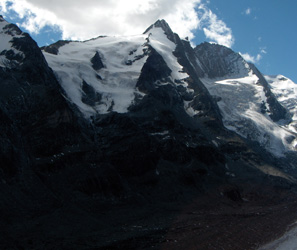Grossglockner
- Grossglockner
- 3798 m.
- Primary factor: 2423 m
- Location: North 47:04.476, East 012:41.626 (GPS at the summit)
- Austria HP
- Difficulty: Alpine PD, steep ice, crevasses, UIAA rock II, YDS class 3, but very exposed.
- Climbed August 10, 2005

Grossglockner
|

|